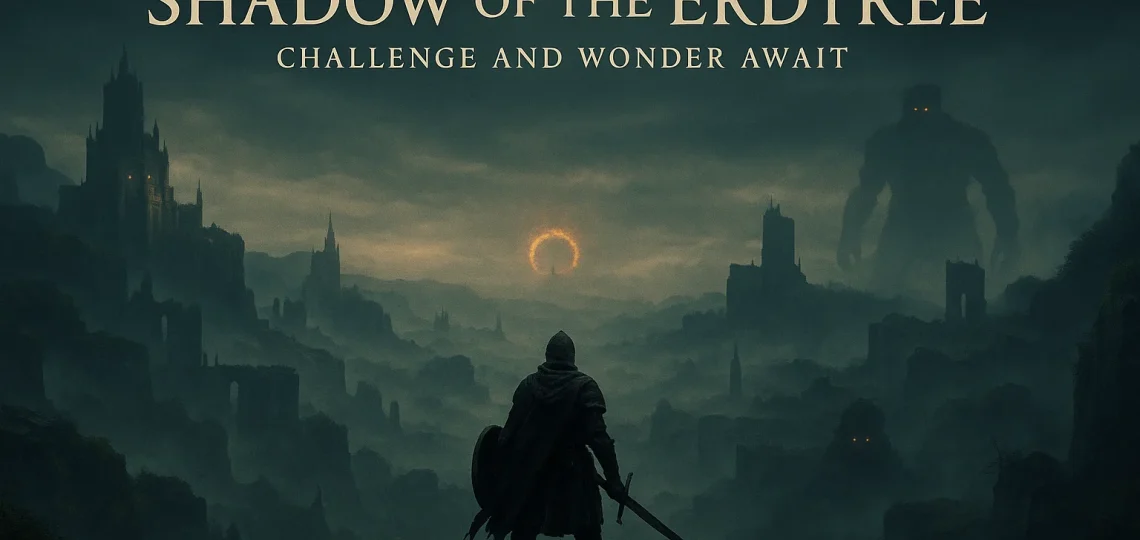
Elden Ring: Shadow of the Erdtree – One Year Later, Why It Still Shines Bright
When Elden Ring: Shadow of the Erdtree launched over a year ago, it immediately split the community in two. Some players hailed it as FromSoftware’s greatest expansion ever, while others criticized its difficulty and pacing. I was firmly in the first camp. As someone who has played every FromSoftware title since Demon’s Souls, I felt Shadow of the Erdtree captured everything that makes these games special: mystery, challenge, and an unmatched sense of discovery. Revisiting it a year later, I found my admiration only deepened.
Rediscovering the Shadowlands
Booting up the game again after months away felt almost nostalgic. The first sight of the misty grave plains instantly transported me back to that first moment of wonder. The world still feels alive—vertical, layered, and brimming with secrets. The way regions connect to each other, from the eerie swamps to the towering citadels, remains one of the most impressive aspects of the expansion’s design.
Exploring the Shadowlands reminded me why the Elden Ring formula works so well. Each step forward feels earned, each discovery meaningful. And yes, that difficulty spike is still there—but it feels purposeful rather than punishing. The bosses test your patience and mastery, not just your reaction time. For players who want to strengthen their builds before facing these brutal foes, it’s always worth finding reliable ways to buy Elden Ring runes to fine-tune your character. Preparation truly makes all the difference here.
The Bosses: From Frustration to Fulfillment
If there’s one thing Shadow of the Erdtree does exceptionally well, it’s boss design. From the majestic Messmer the Impaler to the cinematic confrontation with Bayle the Dread, these encounters feel handcrafted to push you to your limits. My personal favorite, Rellena, Twin Moon Knight, still stands as one of the most fluid and exhilarating fights in any Souls game.
While some players argued the DLC’s bosses were “too hard” or “unfair,” I believe they represent the very essence of FromSoftware’s philosophy—overcome the impossible, and you’ll feel unstoppable. The game rewards persistence and strategy. Learning to adapt to new movesets, experimenting with weapon builds, and optimizing your loadout bring a satisfying rhythm to every attempt.
A World Built with Care
After replaying the expansion, what struck me most wasn’t just the boss battles, but the world itself. The Shadowlands remain visually stunning, full of tiny architectural details and environmental storytelling. From broken bridges to hidden villages tied to deep lore, every area feels like it has a story to tell.
I noticed more subtle touches this time around—extra lines of NPC dialogue, new connections between quests, and lore hints I had completely missed during my first playthrough. It reminded me how rich Elden Ring’s design is, rewarding players who take time to explore rather than rush from one boss to the next.
And while opinions differ online, I find that revisiting the game with an open mind—away from community noise and criticism—helps you appreciate its artistry. Whether you’re exploring the majestic Shadow Keep or uncovering the tragic fate of Queen Marika, every discovery reinforces just how masterfully crafted this expansion is.
Community Reaction and Reflection
Of course, the fanbase remains divided. Some players continue to argue that the expansion relies on “artificial difficulty” or that the map feels too empty. But in my experience, Shadow of the Erdtree’s design choices are deliberate—it’s about mood, tension, and gradual revelation.
In a world where players are quick to overanalyze every mechanic, it’s easy to forget the most important question: “Am I having fun?” That, to me, is the heart of FromSoftware’s work. You’re not meant to breeze through these challenges—you’re meant to struggle, learn, and ultimately triumph. And when that victory screen flashes after dozens of failed attempts, no other feeling compares.
Why It Still Matters a Year Later
Replaying the DLC also reminded me how much freedom Elden Ring gives you. Whether experimenting with new builds, revisiting your favorite zones, or farming resources, there’s always something new to uncover. If you’re returning to the game after a break, collecting Elden Ring runes efficiently is still one of the best ways to rediscover the fun—especially if you plan to try out new weapons or magic combinations from the expansion. Sites like U4GM remain useful for players looking to save time and focus on the core experience rather than endless grinding.
Ultimately, what keeps Shadow of the Erdtree timeless isn’t just its difficulty or its lore—it’s the emotional journey it offers. The game invites you to be vulnerable, to fail, and to rise again stronger than before. That’s a rare kind of storytelling, and it’s why I still consider it my favorite FromSoftware DLC.
A year later, Shadow of the Erdtree continues to shine as a powerful reminder of why we love FromSoftware’s games. It challenges us, frustrates us, and rewards us in ways few other titles can. Ignore the noise, dive back into the Shadowlands, and experience it on your own terms. After all, this is a world meant to be felt, not analyzed to death.